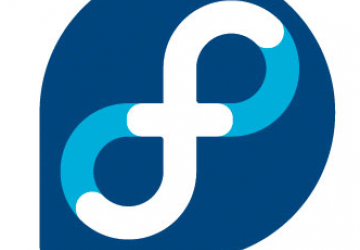Spotlight on Linux: Fedora 14

Fedora is the open source community driven testbed for Red Hat Enterprise Linux containing many of the technologies that will become available and commercially supported in RHEL. This means that Fedora is oftentimes considered "cutting edge." Despite its business class roots and developer appeal, many regular desktop users find Fedora just the right fit due to its general purpose nature.
The latest version was released November 2 and is still getting positive reviews. Most often highlighted were the features for the enterprise such as newly added developer tools, security auditing tools, a new virtual machine framework, and cloud and remote management software. Many are new technologies (or new to Linux) and are on their way to Red Hat Enterprise Linux. As exciting as they are, many use Fedora for their plain ole everyday email/Web/chat/multimedia desktop.
Recent versions of Fedora have shipped with lovely default desktops, your choice with the DVD image. The default one-CD live image ships with GNOME, but options are available with KDE, LXDE, and Xfce for 32- or 64-bit architectures as well as the full DVD install images. However...
One of biggest complaints with Fedora is its lack of proprietary drivers and multimedia software. Some consider it a disadvantage. Fedora has a policy of shipping almost no closed-sourced code, other than what comes in the kernel, with their distribution. It's an ideology, their philosophy that many other distributions share. There are additional and third-party repositories with much of the needed software and there's never a shortage of helpful community howtos to walk users through such operations (example). In spite of this, many consider Fedora very user-friendly and in all other aspects, it certainly is.
Probably the main advantage of using Fedora is its large and loyal community. Never underestimate the utility of such a community. They help new users, maintain interesting discussion, and can even influence certain aspects of the distribution. One of the determining factors in the popularity of distributions is the size of their community. That puts Fedora near the top of the list.
Another advantage is the level of quality found throughout the distribution. Fedora developers contribute not only to Fedora, but also to upstream projects, and cherish the highest standards of quality control. Bugs are everywhere in code and Fedora is no exception, but Fedora developers seem to rise just a bit higher than some other distributions.
Fedora's tendency toward the cutting edge is considered an advantage to some and a disadvantage to others. While Red Hat is extremely conservative, Fedora is quick to adopt and test new technologies. Many users who like to see new software first turn to Fedora. So, despite efforts, sometimes instability may creep in.
Fedora always features lots of popular software, and Fedora 14 is no exception. Their DVD is chocked full and each one-CD image ships with some of the most popular. Another advantage of Fedora is their large repository of software. Just about anything you can think of is packaged for Fedora and easily installable through the software manager.
So, if you're in the market for a new or additional Linux distribution, Fedora can most assuredly fill the bill. Many think of Fedora as a distribution for more advanced users, but it can fit into just about any routine.










